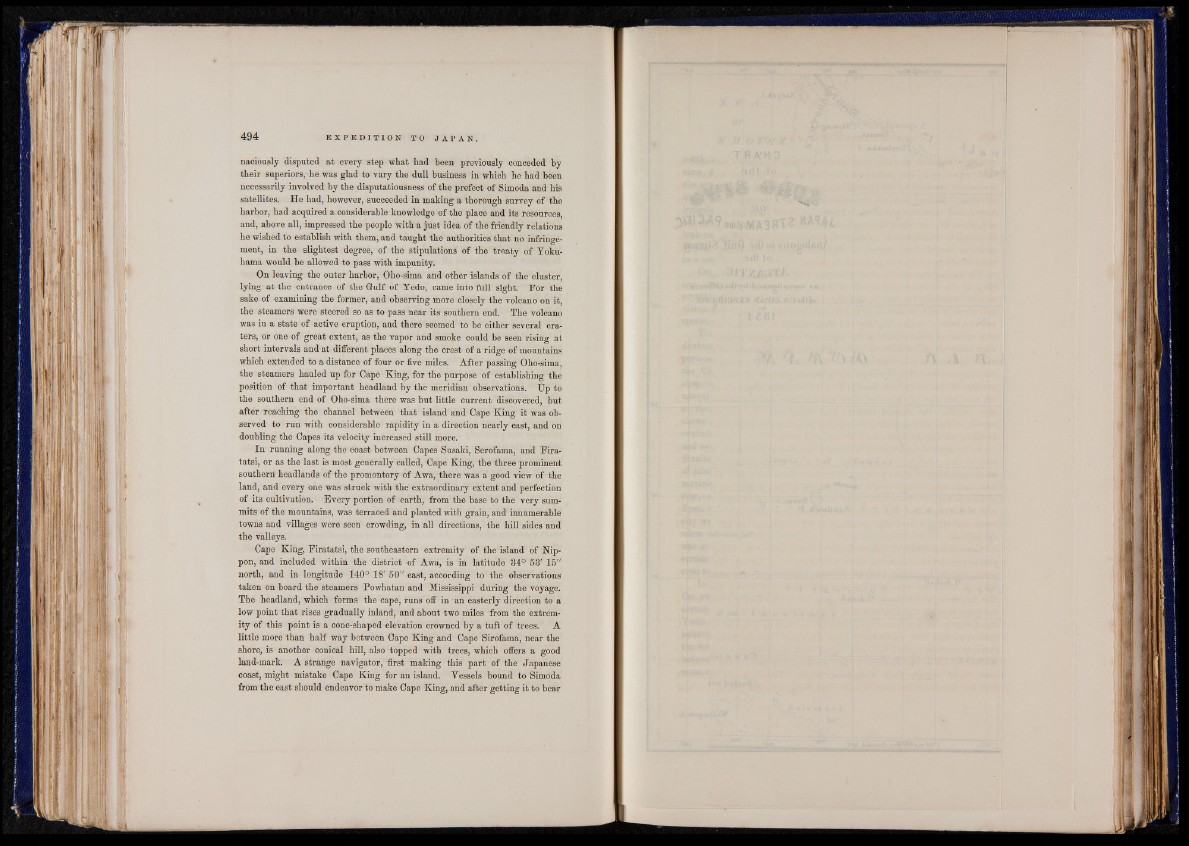
naciously disputed at every step wliat had been previously conceded by
their superiors, he was glad to vary the dull business in which he had been
necessarily involved by the disputatiousness of the prefect of Simoda and his
satellites. He had, however, succeeded in making a thorough survey of the
harbor, had acquired a considerable knowledge of the place and its resources,
and, above all, impressed the people with a just idea of the friendly relations
he wished to establish with them, and taught the authorities that no infringement,
in the slightest degree, of the stipulations of the treaty of Yoku-
hama would be allowed to pass with impunity.
On leaving the outer harbor, Oho-sima and other islands of the cluster,
lying at the entrance of the Gulf of Yedo, came into full sight. For the
sake of examining the former, and observing more closely the volcano on it,
the steamers were steered so as to pass near its southern end. The volcano
was in a state of active eruption, and there seemed to be either several craters,
or one of great extent, as the vapor and smoke could be seen rising at
short intervals and at different places along the crest of a ridge of mountains
which extended to a distance of four or five miles. After passing Oho-sima,
the steamers hauled up for Cape King, for the purpose of establishing the
position of that important headland by the meridian observations. Up to
the southern end of Oho-sima there was but little current discovered, but
after reaching the channel between that island and Cape King it was observed
to run with considerable rapidity in a direction nearly east, and on
doubling the Capes its velocity increased still more.
In running along the coast between Capes Susaki, Serofama, and Fira-
tatsi, or as the last is most generally called, Cape King, the three prominent
southern headlands of the promontory of Awa, there was a good view of the
land, and every one was struck with the extraordinary extent and perfection
of its cultivation. Every portion of earth, from the base to the very summits
of the mountains, was terraced and planted with grain, and innumerable
towns and villages were seen crowding, in all directions, the hill sides and
the valleys.
Cape King, Firatatsi, the southeastern extremity of the island of Nippon,
and included within the district of Awa, is in latitude 34° 53' 15"
wj north, and in longitude 140° 18' 50" east, according to the observations
taken on board the steamers Powhatan and Mississippi during the voyage.
The headland, which forms the cape, runs off in an easterly direction to a
low point that rises gradually inland, and about two miles from the extremity
of this point is a cone-shaped elevation crowned by a tuft of trees. A
little more than half way between Cape King and Cape Sirofama, near the
shore, is another conical hill, also topped with trees, which offers a good
land-mark. A strange navigator, first making this part of the Japanese
coast, might mistake Cape King for an island. Vessels bound to Simoda
from the east should endeavor to make Cape King, and after getting it to bear